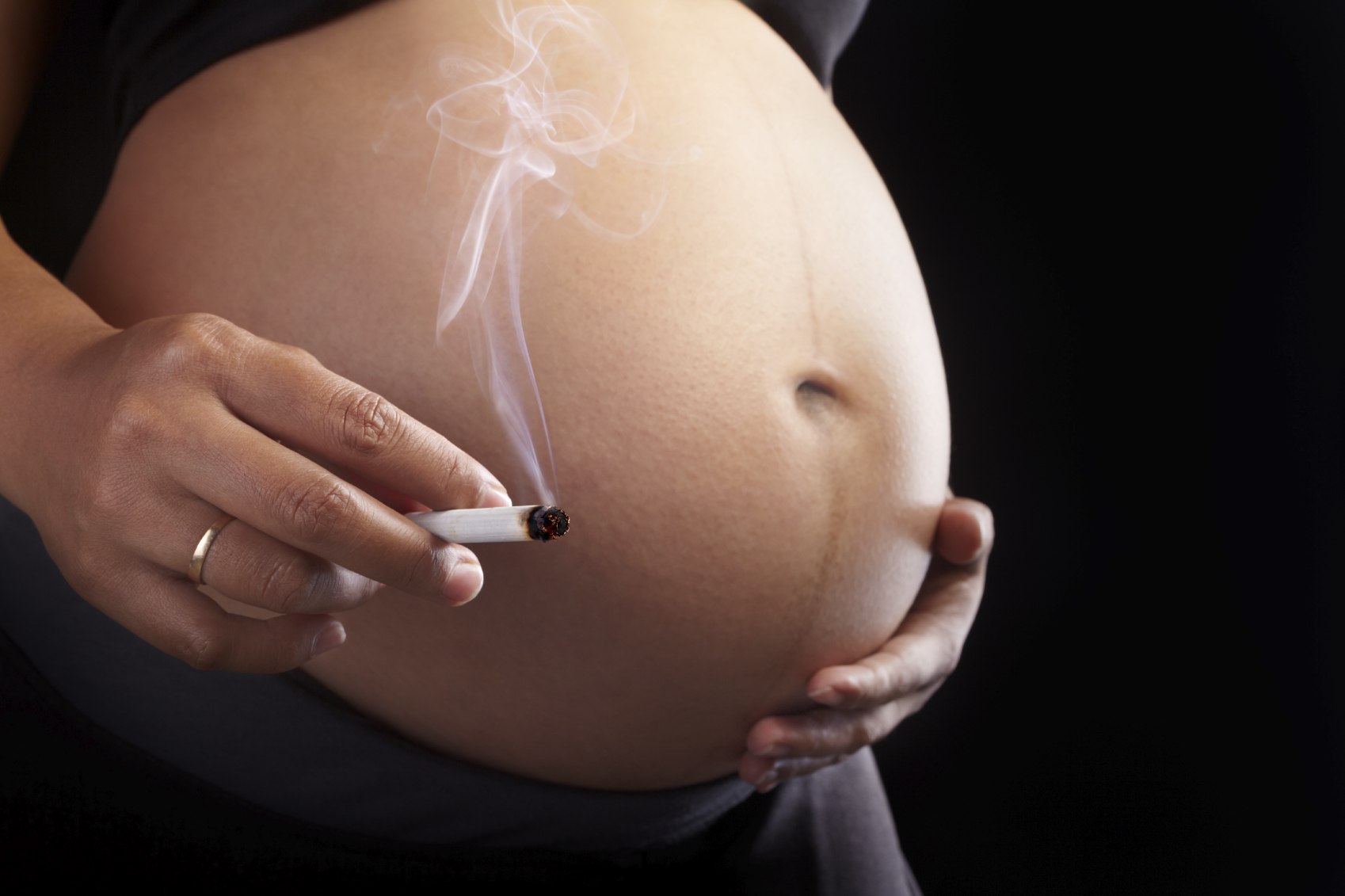TOBACCO AND PREGNANCY
Prevalence
- During 2009-2011, 19% of women reported smoking during the three months prior to pregnancy. Approximately 58% of those women were able to stop smoking by the last three months of pregnancy. However, only about 32% were able to maintain smoking cessation in the postpartum period.1
- Smoking during the last three months of pregnancy was highest among White, non-Hispanic women (12%) and those 1
Health Impact
Smoking cessation prior to 15 weeks gestation produces the greatest maternal and fetal benefits. However, quitting smoking at any point yields substantial health benefits.2
Effects of Smoking
-
Ectopic Pregnancy2,3
-
 The fertilized ovum implants outside of the uterus, most commonly in the fallopian tubes.3
The fertilized ovum implants outside of the uterus, most commonly in the fallopian tubes.3
-
Spontaneous Abortion (Miscarriage)3
-
Placenta Previa2,3
-
he placenta partially or completely obstructs the cervical os, which frequently prompts delivery by Caesarean section.he placenta partially or completely obstructs the cervical os, which frequently prompts delivery by Caesarean section.3
-
If smoking during pregnancy were eliminated, an estimated 10% of abnormal placentation cases could be avoided.3
-
Placental Abruption2,3
-
he placenta detaches from the wall of the uterus before delivery and can lead to preterm birth, stillbirth, or infant death.he placenta detaches from the wall of the uterus before delivery and can lead to preterm birth, stillbirth, or infant death.3
-
Compared to nonsmokers, the risk of placental abruption is an estimated 1.4 to 2.4 times higher among smokers.3
-
Prreterm Premature Rupture of Membranes (PPROM)reterm Premature Rupture of Membranes (PPROM)2,3
-
Preterm Delivery2,3
-
Intrauterine Growth Restriction (IUGR)2,3
-
IUGR is reduced fetal growth during gestation, specifically the lowest 10% of birth weights for any gestational age.3
-
If all women were nonsmokers during pregnancy, the occurrence of IUGR could be reduced by an estimated 30%.3
-
Low Birth Weight (LBW)2,3
-
LBW is defined as less than 2,500g at birth and is the leading cause of infant death.3
-
If all women were nonsmokers during pregnancy, the occurrence of LBW could be reduced by an estimated 20%.3
-
Infant Mortality and Stillbirths2,3
-
Stillbirth is fetal death occurring after 28 weeks gestation. Infant mortality is defined as death within the first year of life.3
-
Smoking during pregnancy is linked to approximately 1,000 infant deaths annually.4
-
Sudden Infant Death Syndrome (SIDS)2
-
Impact on Child’s Health:
-
Asthma2
-
Infantile colic2
-
Childhood obesity2
Effects of Secondhand Smoke
- Like primary tobacco exposure, secondhand smoke also increases the risk for adverse obstetric and pediatric outcomes and should be avoided.2
- Exposure to secondhand smoke during pregnancy increases the risk of:

- Spontaneous abortion (miscarriage)5
- Preterm birth5
- Low birth weight5
- Sudden infant death syndrome (SIDS)5
- Children that breathe in secondhand smoke experience more:
- Ear infections5
- Coughs and colds5
- Respiratory infections like bronchitis and pneumonia5
- More frequent and severe asthma attacks5
- Tooth decay5
Screening
“The USPSTF [U.S. Preventive Services Task Force] recommends that clinicians ask all pregnant women about tobacco use and provide augmented, pregnancy-tailored counseling for those who smoke.” Level A recommendation4
- Physicians should screen all pregnant patients at the first prenatal visit as well as throughout the course of the pregnancy.2
- Incorporate the impacts of tobacco on pregnancy and infant health, as detailed above, in the counseling of pregnant patients.2
What If Screening Is Positive?
All patients identified as smokers should be given resources to assist with quitting, e.g. 1-800-QUIT-NOW.2 More Resources
Pharmacotherapy
In Pregnancy
-
The U.S. Preventive Services Task Force (USPSTF) concluded that there is inadequate evidence to evaluate the safety or efficacy of pharmaceuticals for smoking cessation [including nicotine replacement therapies (nicotine gum, patch, lozenge, inhaler, or nasal spray), Varenicline (Chantix®), and Bupropion (Zyban®)] during pregnancy.2,4
-
Clinical trials studying the use of nicotine replacement therapy in pregnancy have been attempted, but in the United States, they have all been ended prematurely due to adverse pregnancy effects or failure to demonstrate effectiveness.2
-
The American College of Obstetricians and Gynecologists (ACOG) states that nicotine replacement therapy in pregnancy should only be used in a patient highly motivated to quit, after careful discussion about the risks of smoking and that of nicotine replacement therapy, and under close supervision.2
In Breastfeeding
-
The USPSTF concluded that there is insufficient evidence to assess the safety or efficacy of medications for smoking cessation during lactation.2
-
ACOG advises that nicotine replacement therapy during lactation only be used in patients clearly determined to quit, after thorough discussion about the risks of smoking and that of nicotine replacement therapy, and under careful supervision.2
-
ACOG also states that in lactation Varenicline and Bupropion should only be used with vigilance and in consultation with experienced providers due to the risk of depression and suicidality with their use.2
Resources
-
-
-
-
-
October 2014

